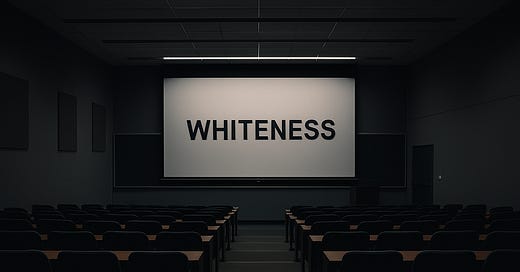On February 17, the U.S. Department of Education made a quiet but significant announcement: it terminated over $600 million in grants to universities and nonprofits that were using taxpayer funds to promote racial discrimination.
Here’s what the DOE’s website says:
“The U.S. Department of Education today announced it has terminated over $600 million in grants to institutions and nonprofits that were using taxpayer funds to train teachers and education agencies on divisive ideologies. Training materials included inappropriate and unnecessary topics such as Critical Race Theory; Diversity, Equity, and Inclusion (DEI); social justice activism; 'anti-racism'; and instruction on white privilege and white supremacy. Additionally, many of these grants included teacher and staff recruiting strategies implicitly and explicitly based on race.”
This is a major policy shift—and long overdue
.
Now, you might ask: how does a secular professor or administrator justify racial discrimination in the first place?
They do it through rebranding. Discrimination is reframed as helping the marginalized or lifting up the disadvantaged. The rhetoric sounds noble. But here’s the problem: you can help the disadvantaged without engaging in racial discrimination.
So why don’t they?
Because helping the marginalized isn't really the goal. What we find out is what is really in their hearts. The real agenda is ideological enforcement against those they do not like. These initiatives often function as tools to:
Attack and silence dissenting viewpoints by appeals to fear and insulting those who disagree.
Promote a narrow social philosophy as moral dogma.
Avoid rational debate—because they know they would lose in a fair intellectual exchange.
DEI was never just about kindness or inclusion. It was about power—who gets to speak, who must stay silent, and who gets to define morality in the classroom. For a while, the bureaucratic language of “equity” shielded it from scrutiny. But now the mask is slipping. The public found out the truth.
If you’d like to check on things for yourself, take a look at ASU’s web page and see how long it is before you encounter one of these programs. I think you’ll find them in places you didn’t expect. I wanted to see if the New College of Interdisciplinary Arts and Sciences at ASU West Valley had anything like this, and it only took one click to find such a program being touted. I double-checked on the DOE web page, and it looks like the program is getting funding cuts.
Here is how my school at ASU West Valley is making a humanities education available to everyone: by making every 100 and 200-level class 60 students. What that really means is that these students are not being given the experience of a humanities education where a class of 20, 30 is pushing it, gets to discuss the great ideas together.
They say they are including, but in fact, they are taking away a wonderful opportunity the students they want to help. That is how such “good intentions” always seem to work, isn’t it?




